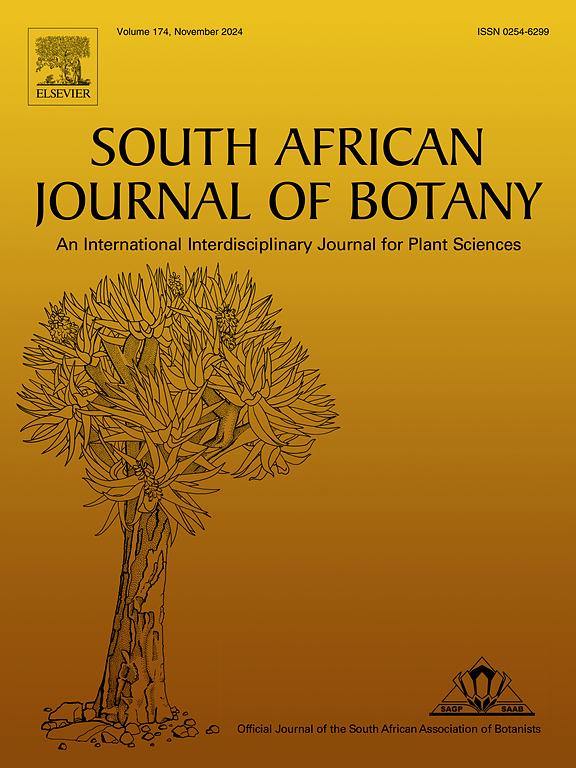有机施肥系统对天竺葵植株生长和精油产量的影响
IF 2.7
3区 生物学
Q2 PLANT SCIENCES
引用次数: 0
摘要
芳香植物天竺葵(Pelargonium graveolens L. 'Hérit)被称为天竺葵,其生物活性化合物具有很高的经济价值。由于次生代谢受栽培条件等多种因素的影响,这项工作旨在评估不同施肥系统对天竺葵无性生长、精油含量和产量的影响。处理方法如下T1)化学施肥(N-P-K);T2)不施肥;T3)生物动力施肥;T4)有机施肥;T5)生物动力施肥 + 植物生长促进菌(PGPB);T6)有机施肥 + PGPB;T7)有机堆肥。施用巴西天竺葵生长促进菌(PGPB)对天竺葵的植株生长和精油产量没有显著影响。施用化学肥料(T1)或生物动力肥料(T3 和 T5)的植物没有观察到精油生产。施用有机肥(T4 和 T6)的植物除了精油含量和产量外,农艺发展也更快。因此,有机施肥是一种很有前景的香叶种植方法。本文章由计算机程序翻译,如有差异,请以英文原文为准。
Organic fertilization systems on the vegetative growth and essential oil production of Pelargonium graveolens
The aromatic plant Pelargonium graveolens L. 'Hérit, known as geranium, presents bioactive compounds of high economic interest. Since the secondary metabolism is affected by several factors such as the cultivation conditions, this work aimed to assess the impact of different fertilization systems on geranium vegetative growth and essential oil content and yield. The treatments were: T1) chemical fertilization (N-P-K); T2) no fertilization; T3) biodynamic fertilization; T4) organic fertilization; T5) biodynamic fertilization + plant growth-promoting bacteria (PGPB); T6) organic fertilization + PGPB; and T7) organic compost. The application of Azospirillum brasilense (PGPB) had no significant effect on geranium vegetative growth and essential oil production. Essential oil production was not observed in plants treated with chemical (T1) or biodynamic fertilizers (T3 and T5). Plants treated with organic fertilization (T4 and T6) showed greater agronomic development in addition to essential oil content and yield. Consequently, organic fertilization emerges as a promising approach for cultivating P. graveolens.
求助全文
通过发布文献求助,成功后即可免费获取论文全文。
去求助
来源期刊

South African Journal of Botany
生物-植物科学
CiteScore
5.20
自引率
9.70%
发文量
709
审稿时长
61 days
期刊介绍:
The South African Journal of Botany publishes original papers that deal with the classification, biodiversity, morphology, physiology, molecular biology, ecology, biotechnology, ethnobotany and other botanically related aspects of species that are of importance to southern Africa. Manuscripts dealing with significant new findings on other species of the world and general botanical principles will also be considered and are encouraged.
 求助内容:
求助内容: 应助结果提醒方式:
应助结果提醒方式:


